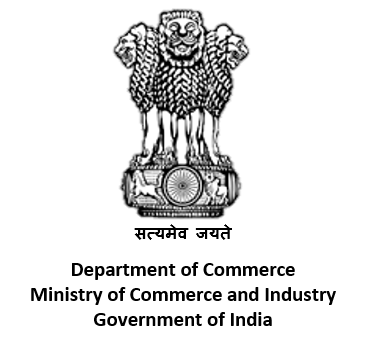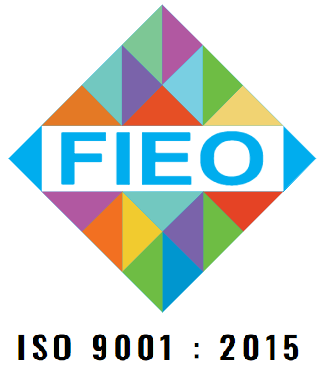Free Trade Agreement Between The Republic of India And The Democratic Socialist Republic of Sri Lanka (FTA)Answer: India’s GDP was US$ 64 billion in the 1970, it increased to US$ 275 billion in 1991 after remaining almost stable for nearly four years the GDP increased at exponential rate to reach US$ 1848 billion in 2011. On the other hand Sri Lanka GDP was US$ 2 billion in the 1970, it increased to US$ 9 billion in 1991 thereafter increased at exponential rate to reach US$ 59 billion in 2011. Therefore, total market size in GDP terms was US$ 491 billion in 2000 and by 2011 it increased to US$ 1907 billion. India-Sri Lanka FTA was the first FTA which India signed. Answer: The India-Sri Lanka FTA was signed by the Prime Minister of India and the President of Sri Lanka on December 28, 1999 and became operational from December 15, 2001. Recognising the need for progressive reduction and elimination of tariffs in goods, the countries agreed for a mutually acceptable tariff reduction schedule besides other areas of co-operate to expand the bilateral trade. The ISLFTA’s coverage was limited to the goods sector. Answer: Both agreements , Services and Investment, are in the process of negotiations. Answer: The ISLFTA Agreement sought co-operation in areas like: state trading enterprises (Article VI); rules of origin (Article VII); safeguard measures (Article VIII); domestic legislation (Article IX); balance of payment measures (Article X) and settlement of disputes (Article XIII). The ISLFTA did not cover the areas like services, investment and intellectual property rights, etc. It has fairly clear “rules of origin” (ROO) criteria and prohibition. Answer: The main Indian exports to Sri Lanka are petroleum (crude & products), transport equipment’s, cotton, yarn fabrics, sugar, drugs pharmaceuticals & fine chemicals. The main Sri Lankan exports to India are, spices, electrical machinery except electronic, transport equipment’s, pulp & waste, natural rubber and paper board. Answer: The present status under the ISLFTA, as on the 2012, is that both the parties have eliminated tariff on all the products lines, except those which fall under the negative/exclusion list.
Concession offered by India
The Government of India agreed to grant duty free access to all exports from Sri Lanka in respect of items freely importable into India, except on items listed in Annexure ‘D’ of this Agreement, in accordance with the phase out schedule detailed below:
Upon entry into force of the Agreement:
a) Zero duty access for the items in Annexure ‘E’ of the Agreement;
b) 50% margin of preference on the remaining items except on items listed in Annexure ‘D’ of the Agreement. Concessions on items in Chapters 51 to 56, 58 to 60 and 63 shall be restricted to 25%.
c) The margin of preference on the items mentioned in (b) above shall be increased to 100% in two stages within three years of the coming into force of the Agreement, except for the textiles items referred to in 1(b) above.
Concession offered by Sri Lanka
Government of Sri Lanka shall provide tariff concessions on exports from India to Sri Lanka in respect of items freely importable into Sri Lanka, as detailed below:-
Zero duty for the items in Annexure ‘F’– I, upon entering into force of the Agreement.
50% margin of preference for the items in Annex ‘F –II, upon coming into force of the Agreement. The margin of preference in respect of these items shall be deepened to 70%, 90% and 100%, respectively, at the end of the first, second and third year of the entry into force of the Agreement.
For the remaining items except those in Annexure ‘D’, the tariffs shall be brought down by not less than 35% before the expiry of three years and 70% before the expiry of the sixth year and 100% before the expiry of eight years, from the date of entry into force of the Agreement. Answer: The tariff concessions offered by Sri Lanka are the negative list of no tariff reductions in Annexure D of the Agreement (1216 items); immediate tariff elimination in Annexure F-1 of the Agreement (319 items); phased tariff elimination in Annexure F-II of the Agreement (889 items) ; and a residual list for longer period for tariff elimination (2742 items). India’s categories are a negative list of no tariff reductions in Annex D (431 items); 25% tariff reduction (605 items); immediate tariff elimination in Annexure E (1357 items); 50% tariff reduction; and a residual list of longer phase out period for tariff elimination (2870 items). Answer: India-Sri Lanka negotiations were concluded using lists of tariff lines at HS 6-digit level. Answer: The Annexure D of the ISLFTA Agreement has the negative lists for both the countries. India has a total number of 431products and Sri Lanka maintains 1216 products in the negative list. Answer: Excluded products of India are edible fruit and nuts; beverages; plastic products; rubber products; manufactures of straw; paper and paperboard; silk; vegetable textile fibres; man-made filaments; man-made staple fibres; wadding, felt and nonwovens; carpets; articles of apparel and clothing accessories, knitted or crocheted and articles of apparel and clothing accessories, not knitted or crocheted. Answer: Cumulative rules of origin was permitted under the Agreement provided the exporting country was subjected to a minimum value addition of 25 percent and to the condition that the aggregate value addition in the territories of the Contracting Parties is not less than 35 per cent of the f.o.b. value of the product under export. The ISLFTA was agreed at 6 digit level HS code. Answer: No Only Products that met the requirements of the Rules of Origin shall be eligible for preferential treatment, subject to the provisions of clauses (a), (b),(c) and (d) of rule 7 of the Agreement. |
.gif)
.gif)







